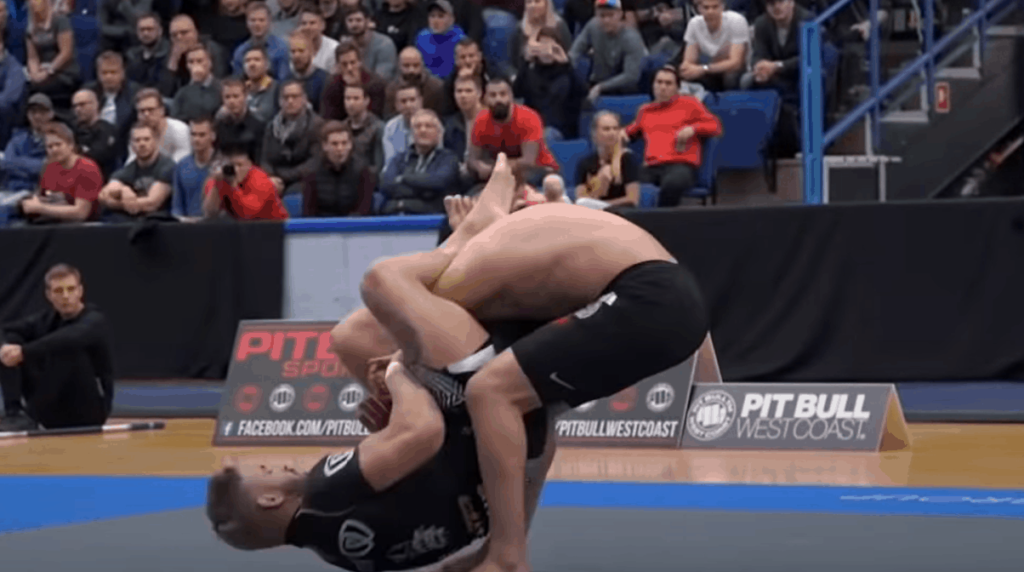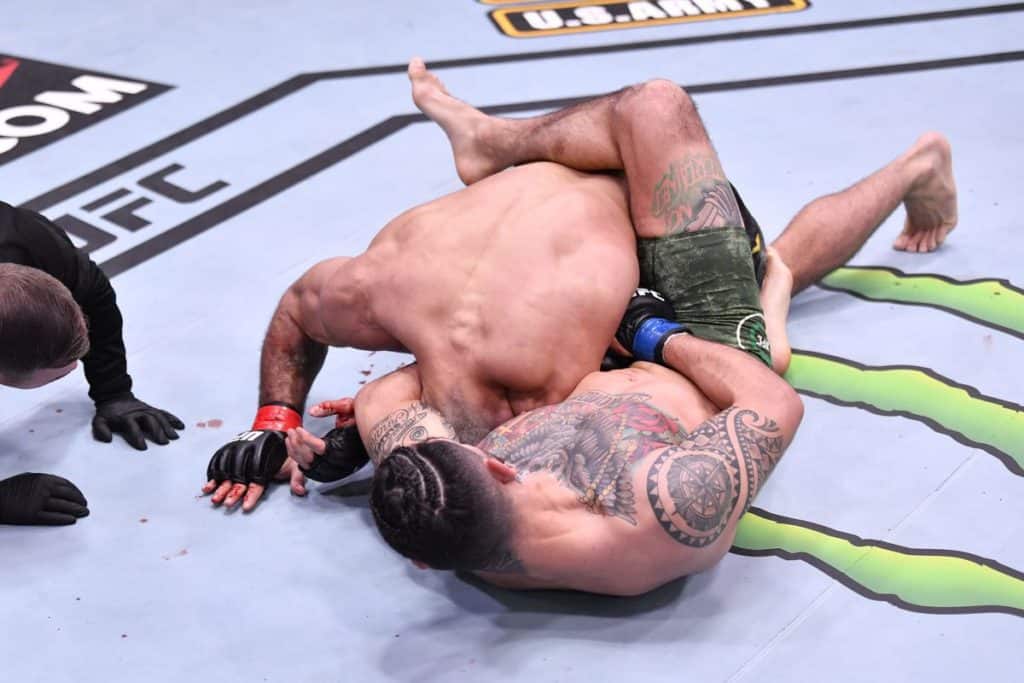
A Brazilian Jiu Jitsu (BJJ) training session typically consists of a warm-up, technique instruction, drilling, and rolling or sparring. Most classes run from 90 minutes to 2 hours or more.
Anyone who trains in BJJ will tell you it is one of the most grueling sports. This is particularly true in sparring sessions that can last upwards of 10-12 minutes per roll.
Jiu Jitsu is a unique blend of isometric strength, cardiovascular endurance, and explosive power. It taxes every part of your anatomy, leaving you covered in sweat at the end of every class. There’s truly nothing else like it.
There have been situations where I, jokingly (to some degree), thought “this is it; this is where my life ends.” Often this is during a summer class in a poorly ventilated room. Point is, it’s a tough sport and the training can be grueling.
An average Brazilian Jiu Jitsu class will burn between 500-900 calories. The factors involved in determining the exact amount of calories burned for an individual is their body weight and level of conditioning.
A person’s body weight is an important consideration when determining calorie burn for exercise. Obviously, the more weight a person has on their frame, the more weight they have to move around. Moving around more body weight has a greater energy demand, and thus a greater calorie burn.
In most cases, a heavyweight is going to burn more calories in a BJJ class than a bantamweight. This is even if the heavyweight is in great shape and the bantamweight is a beginner. The size of a person is a major consideration when measuring calorie burn.
This also highlights the slight difference between gi and no-gi training. Wearing a gi adds weight to your frame. The extra weight makes the activity harder. It’s no different than wearing a weighted vest or if you simple bulked up over time and added body weight.
This is the case for both high levels of body fat and high levels of muscle mass. One may think there is less of a calorie burn for an individual with high levels of muscle. However muscle has very high oxygen demands during exercise.
Consider how many times you have seen muscular fighters get completely fatigued during fights. A recent example was with Jiu Jitsu specialist Rodolfo Vieira. Vieira is a muscle bound UFC middleweight and multiple time Jiu Jitsu world champion.
Vieira was dominating the first round of his fight against Anthony Hernandez, but could not get the finish. Hernandez was able to weather the storm and ironically submitted the heavily gassed Vieira. If you say Vieira at a gym you would think the man is in perfect shape.

But this is one of many examples of how, despite having low body fat and lots of muscle mass, the overall size of an individual contributes to fatigue and calories burned.
Of course this is not always the case. Jiu Jitsu champion Gordon Ryan also has an impressive physique while weighing in at over 220lbs. While he is yet to fight in MMA, he has grappled against top competition for years. When he grapples, he looks like he’s taking a leisurely stroll on the beach.
This is where conditioning comes into play. Ryan, among the rest of John Danaher’s top students, is notorious for training nearly every day. Training with that type of frequency will lead to an elite level of conditioning.
Conditioning has an inverse effect on total calories burned. The more conditioned you are within a particular activity, the less calories burned.
Consider this; think about a time where you went for a run for the first time in awhile. The run was likely very difficult, your lungs may have even felt a burning sensation afterwards. That particular run of say, 20 minutes, resulted in a high number of calories burned.
If you continued to run multiple times per week, it would become easier as you get into better cardiovascular shape. That same 20 minute run with all variables equal (i.e. speed, nutrition, recovery, etc.) would burn fewer calories than before.
Efficiency is the component of conditioning that determines calories burned. As you become more efficient at an activity, the activity becomes easy. As the activity becomes easier, there is less of an energy demand on the body. The result is fewer calories burned.
In Jiu Jitsu, the activity that will burn the most calories is rolling. Rolling is a live drill where you are grappling an opponent one-on-one with the goal of submitting them. Since you don’t know what your opponent will do, you can only become so efficient at it.
Compare this to a warm-up before class or a drilling exercise, which is typically the same each time.
If your goal is to burn as many calories as possible, this illustration of efficiency shows why it’s important to change up workouts and training sessions. Since the 20 minute run is easier, you now have to run faster in that same time period or for a longer distance.
Wearing a gi is an interesting phenomenon that could go in either direction depending on a person’s interpretation. Due to the grips and the collar, the gi makes certain movements more efficient. The grips also create more opportunities for Jiu Jitsu practitioners to stall in various positions.
However, the gi itself is less efficient. As mentioned before it adds weight to your frame, but the material also creates friction which makes movements harder in other situations. The total calorie burn here depends on what type of game you have.
Efficiency is a good thing to have when learning a skill, but a bad thing to achieve when the goal is to burn calories. Obviously, becoming more efficient at submissions, escapes, and takedowns is great when building a skillset for BJJ.
If you are using Jiu Jitsu as a weight loss tool, you will eventually have to increase the frequency or duration of your Jiu Jitsu training as you improve your conditioning. Or you could add something to compliment your Jiu Jitsu, like strength training, yoga, or additional cardio.
